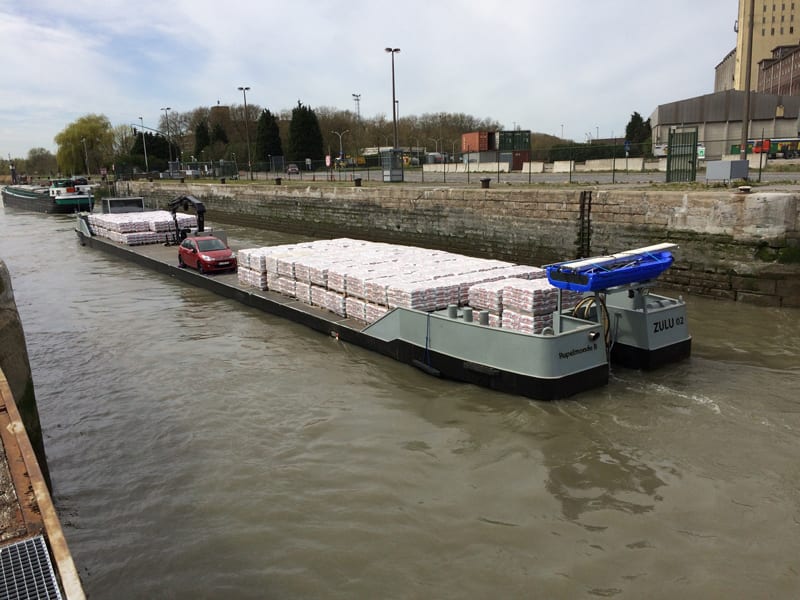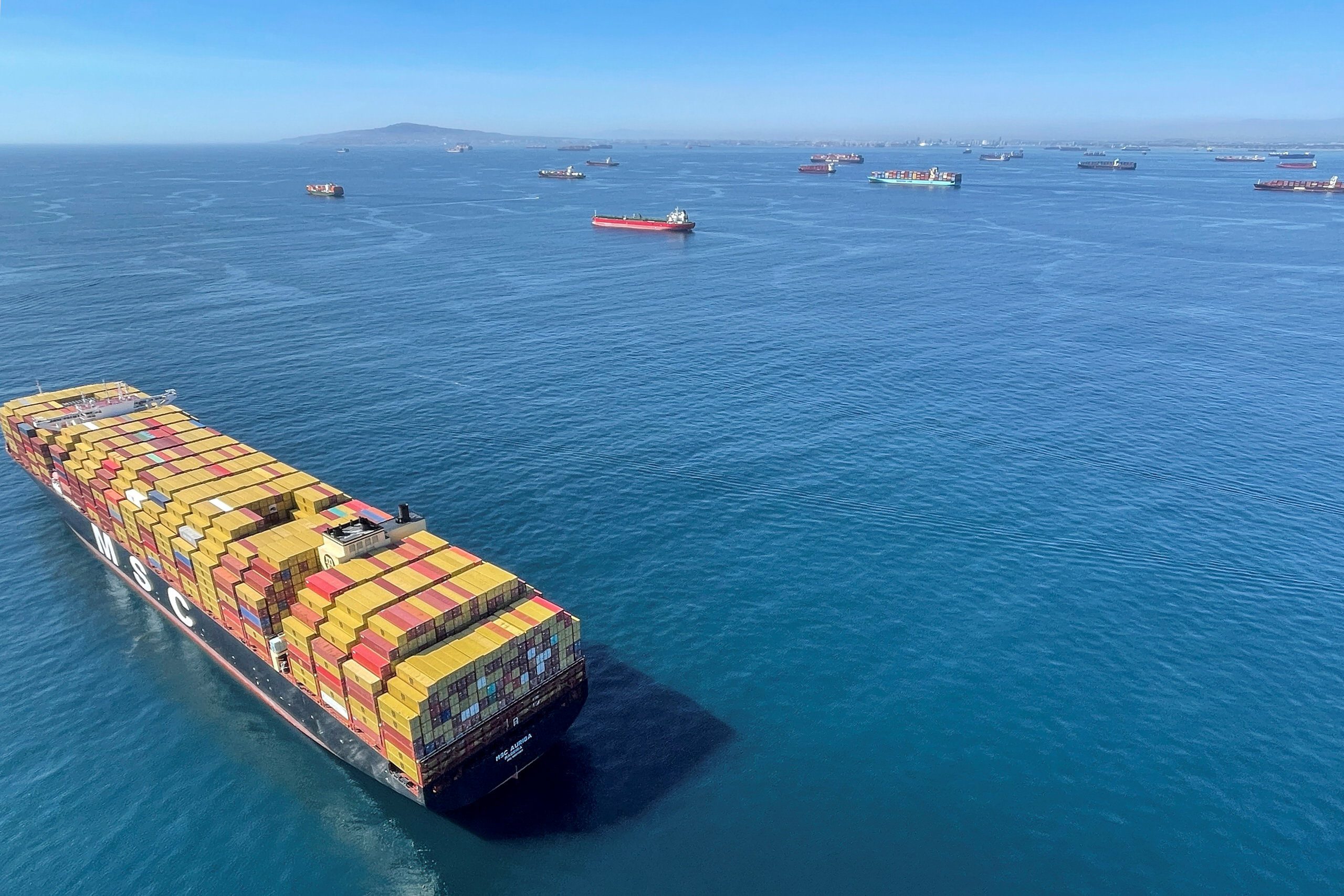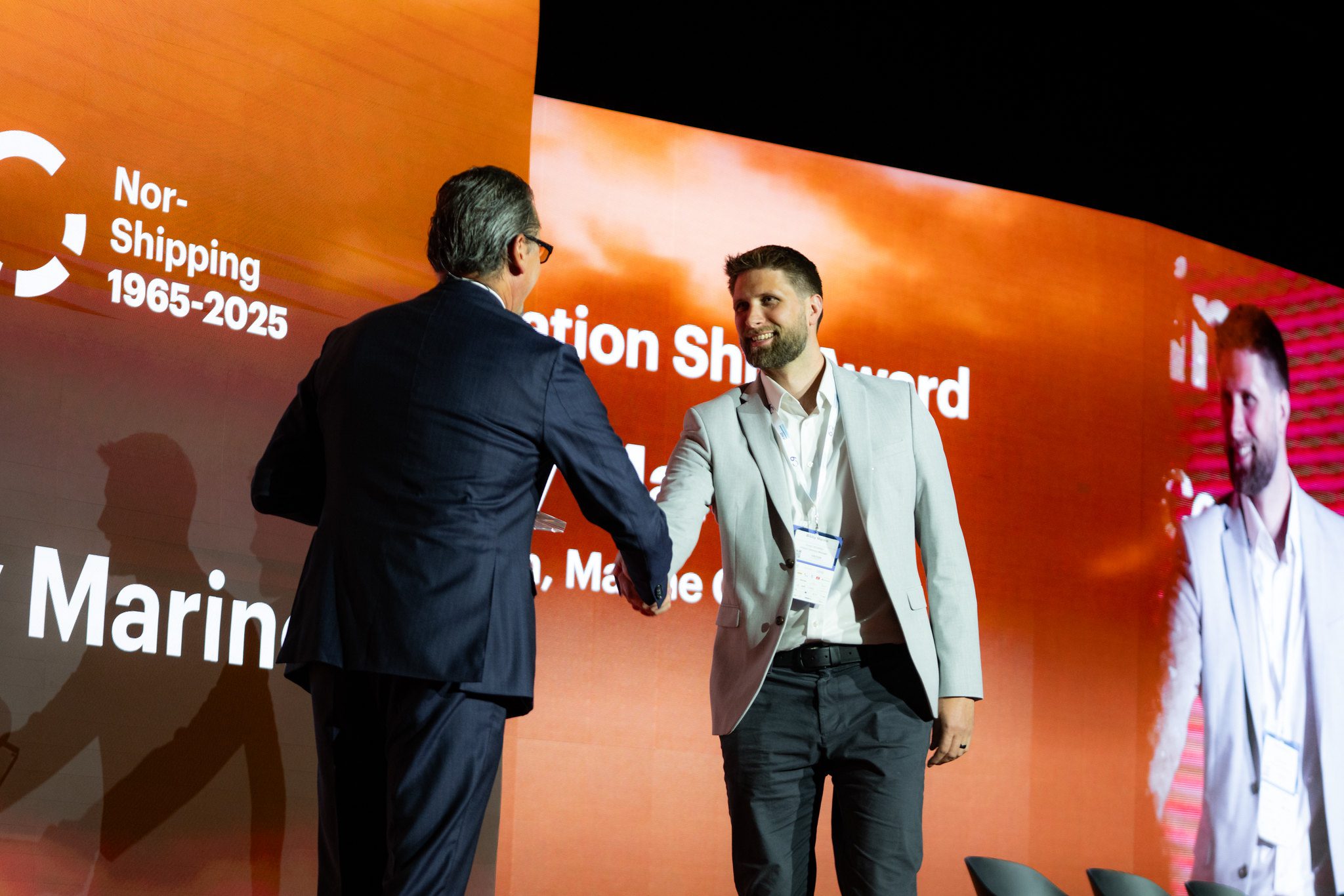.
Op-Ed by Antoon Van Coillie (Blueline Logistics) A tsunami is gathering pace that will overwhelm the inland waterway transport industry in Europe over the next 10 to 15 years, and will change the maritime industry profoundly. This tsunami is called sustainability.
The present inland waterway fleet is not equipped to cope with this. Some stakeholders or companies are aware of a need for change, but their efforts are incremental and will not provide an answer in time to the coming onslaught. Regulation still allows the use of unsustainable engines, but the sustainability agenda of major shippers will force the change. And this earlier rather than later. In order to adequately respond to this challenge, there is an urgent need for a radical rethink of the inland waterway fleet: the type of vessels, the propulsion, the operations and its place in intermodal logistic chains.
Like with seagoing vessels, inland waterway vessels have grown larger and larger. As a result, the number of waterways they operate on has been reduced and the vessels have become vulnerable to low water levels (itself due to climate change). They also require large terminal infrastructures, often congested, in order to operate economically.
The design of a traditional vessel is based on maximum carrying capacity for given length and width, not for most economical use of energy per ton moved. Indeed, when these vessels were designed, energy use was not a determining factor. The problem is that, if you want to make such a vessel zero emission or at least low emission powered, you will never get low emission propulsion that is economical performant. That is why retrofitting existing vessels to become “green” is not very efficient and actually a waste of investment. Moreover, because of its need for more power, a traditional vessel using more expensive “green” propulsion cannot compete against a traditional diesel powered vessel.
Large vessels have other limiting drawbacks. They need a lot of power even just to change course. A canal may become a confined water if the vessel is a certain size relative to the canal. Operating and maneuvering in confined waters needs more energy as the vessel encounters a lot more friction in order to push its hull through the water. The net ton moved per KW is lower than in non-confined waters. Hence smaller vessels are more energy efficient in canals. And whilst the technology to use low emission propulsion exists in the smaller engine sizes, it does not in the bigger engine sizes.
Making a 1.500t vessel low emission is today possible. Making a 5.000t inland vessel low emission is not.
Because of the increase into ever larger vessels, there has also been an increase in underused waterways. In the Netherlands, goods can be shipped from Rotterdam to Delft, The Hague and Haarlem via De Schie, which is a CEMT class 2/3 waterway. However, a look on Marine Traffic shows that nearly all vessels on De Schie are pleasure craft. Yet, there is huge congestion on the parallel motorways the A4 and the A13.
Underusing existing waterway because of the large vessel sizes is contra-productive in the need for modal shift from road to waterway. At the same time, the number of smaller vessels is reducing in numbers and they are increasingly obsolete, most of all in their mode of propulsion. 70 per cent of the Dutch dry bulk and container fleet is on average 44 years old and even today, Euro stage 2 diesel engines are still being installed in existing vessels! Many vessel operators and even some waterway authorities act as though the world and the environment will continue as is.
And there is the issue of crews. The other disruptive and sudden change coming is the looming shortage of skippers. Most of the inland dry-bulk and container vessels are owned by solo owners, skippers that are more than 55 years old. In the short timespan of 5 to 10 years, these owners will disappear, and the ownership structure of the industry will change significantly.
The rethink of our inland waterway fleet and waterways should prepare the industry for these changes. Instead of thinking or wishing that nothing will change, or going for small incremental and ineffective developments along well-trodden paths, or installing unsustainable engines because it is still allowed, or paying lip service to sustainability and carrying on as usual, all stakeholders should on the contrary prepare the industry for this disruptive change. If not, there will be a reverse modal shift and a social bloodbath.
The solutions are here: adapting with a sense of urgency the laws, rules and regulations to allow for change, using smaller vessels, using low or zero emission powertrains, autonomous vessels, modernising the infrastructure – which does not mean building larger infrastructure, but infrastructure that operates 24/24 – 7/7, even automated – re-activating the use of the smaller canals through effective maintenance of these waterways, stimulate or even enforce the use of traffic planning, using digital systems for all sorts of relevant data unfettered by erroneous GDPR restrictions, setting up a fund for retiring obsolete vessels, etc…
This not only will prepare the inland waterway industry to be ready for the coming tsunami as such, but it will also have a huge leverage effect on the European economy, as this will entail new vessels, equipment, maintenance, etc… It will spawn new industries and it will have the needed effect on the sustainability of our logistic chains.
The question to ask is: as major shippers are more and more subscribing to the international sustainability targets, not by 2050 but by 2030, will these shippers use logistic chains with links such as inland waterway vessels if the modus has not responded to the challenge of sustainability and has not adapted itself?
By Op-Ed by Antoon Van Coillie, director of Blueline Logistics, which operates a logistical platform for the transport of palletized goods consisting of logistical hubs combined with small inland waterway vessels/barges, called Pallet Shuttle Barges or PSB’s.

 Join The Club
Join The Club











